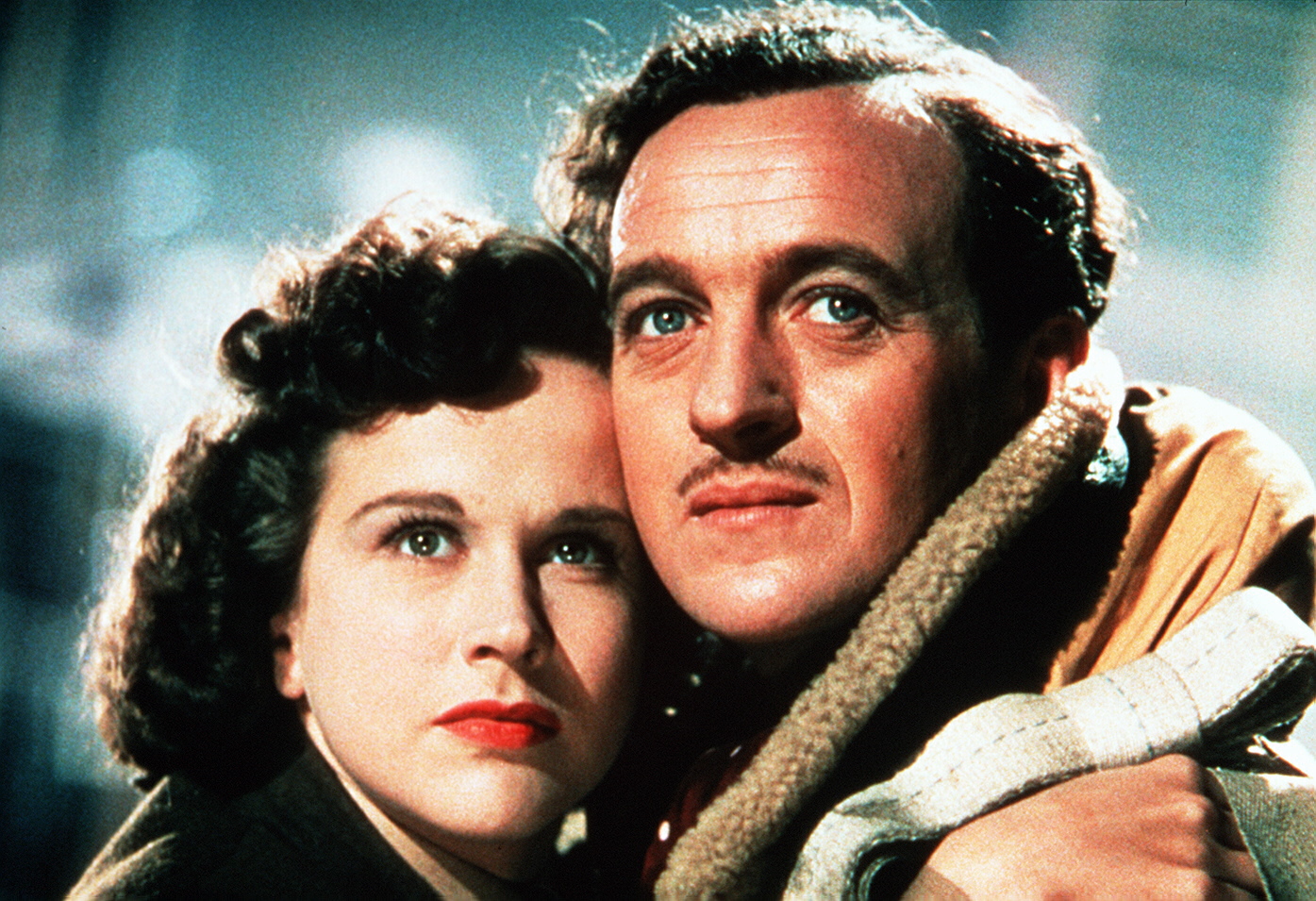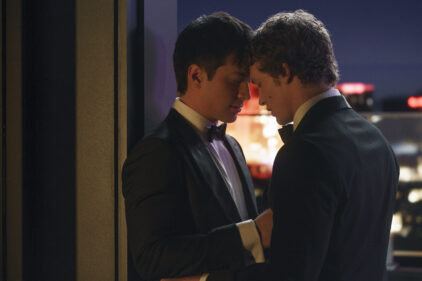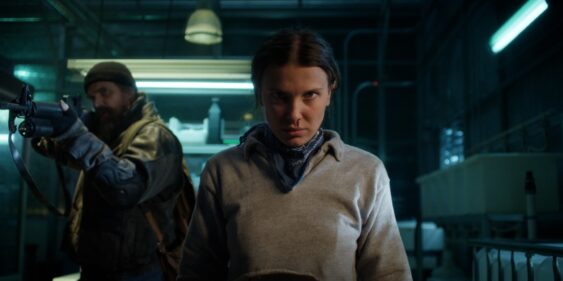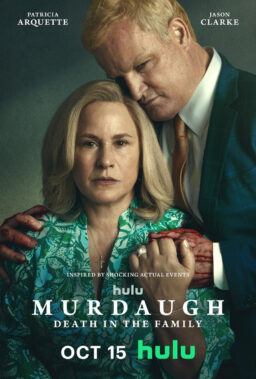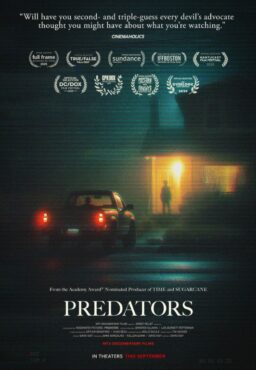The filmmaking partnership of Michael Powell and Emeric Pressburger—collectively known as The Archers—began in 1939 and officially ended in 1957 (though they would reunite for a couple more projects in later years). Together, they would jointly create 20 films during that time with many of them going on to be considered classics of British cinema, including “49th Parallel” (1941), “The Life and Death of Colonel Blimp” (1943), “I Know Where I’m Going” (1945), “Black Narcissus” (1947), “The Red Shoes” (1948) and “The Tales of Hoffman” (1951), and their works would go on to influence such future filmmakers as Martin Scorsese, Francis Ford Coppola, Brian De Palma, and George Romero. Most filmmakers go through their entire careers without making a single film that even comes close to reaching the greatness of any of the titles that I have just cited—to have produced all of them within the span of a decade makes for one of the greatest creative runs in cinema history. What is even more astonishing is that while all of these films are indeed masterpieces, I have not even mentioned what may indeed be the greatest of all their screen collaborations, “A Matter of Life and Death” (1946). Granted, to cite this as their best film is one of those claims that could start arguments amongst cineastes who prefer the likes of “The Life and Death of Colonel Blimp” or “The Red Shoes.” However, watching it again via the beautiful new special edition Blu-ray now available from the Criterion Collection, I am more convinced than ever that it is both their finest achievement and one of the greatest and most deliriously romantic fantasies to ever hit the big screen.
During the early years of their partnership, Powell and Pressburger made a number of films that dealt with World War II, many of which were essentially propaganda efforts designed to either spur on the British war effort or, in the case of “49th Parallel,” attempt to sway the then-neutral United States into finally joining in as well. After the tide had turned and Allied victory was all but assured, a new concern began to grow—what would happen with the once-strained relationship between Great Britain and America once they no longer had a common enemy to unite them. Would the rifts, jealousies and resentments that had divided them in the past, and which had flared up again over British annoyance over America’s delay in joining the fight, return to fester once again or would it be possible for them to finally be put aside once and for all? Towards the end of the war, Powell and Pressburger were approached by Jack Beddington, the head of the Ministry of Information’s film division with a request—create a film that would help to cement Anglo-American relations and show how much they meant to each other after all. In his memoir A Life in Movies (one of the absolute best memoirs ever written by a filmmaker, by the way), Powell recalled responding to this request by asking “You wish us to write a story which will make the English and Americans love each other, with a mixed American and English cast, with one or two big names in it, and it obviously has to be a comedy and spectacular and imaginative, and you want it to be a success on both sides of the Atlantic, and you want it to go on playing to audiences for the next 50 years.” “30 years will do,” Beddington assured him.
What Powell and Pressburger came up with to satisfy all of these demands kicks off with what is quite simply one of the greatest opening scenes in movie history. In the final months of the war, a raid over Germany has been completed but one of the bombers has been badly damaged in the process and is barely staying aloft as it heads back to England. Realizing that the plane isn’t going to make it, the squadron leader, Peter Carter (David Niven) orders his men to bail out, not revealing that his own parachute has been destroyed. While flying towards certain death, he manages to establish radio contact with June (Kim Hunter), an American WAC stationed in England and over the course of the next few minutes, they magically click and fall instantly in love with each other. Alas, there is the unfortunate complication of Peter’s imminent demise and when it becomes painfully clear that there is no chance of rescue, June is devastated while Peter tries to cheer her by uttering one of the all-time great lines of dialogue—“I love you, June. You’re life and I’m leaving you.”—before leaping out of the plane without a chute, preferring that to burning to death.

As astonishing as this is, it is only the start because when we next see Peter, he is waking up on a beach. At first, he assumes that he is in the afterworld but soon discovers that he has somehow survived his fall and is in England. If that weren’t crazy enough, the beach he has landed on is near the base where the American WACs are being housed and who should be biking down the road right then but June, heading home from her tumultuous shift at work. They meet again, each one immediately realizing who the other is, and instantly resume their romance, not even hesitating for more than a moment to ponder exactly how Peter could possibly still be alive. A little while later, that question is answered, sort of, by the arrival of a spirit from the afterworld (which is never specifically cited as Heaven), a 17th century fop and former guillotine victim known as Conductor 71 (Marius Goring), who freezes time for everything except for Peter and informs him there has been a slight problem. Peter was supposed to die in his leap and Conductor 71 was supposed to grab him and escort him to his next destination, only to lose him in all the fog and confusion. Now he has come to finally take Peter with him and is even willing to forgive him the extra twenty hours of life that he received as the result of that mistake.
Not surprisingly, Peter is not especially willing to go along with the plan. For one thing, it wasn’t his fault that Conductor 71 screwed up and sees no reason why he has to give up his miraculous second chance at life just to help balance the celestial books. More importantly, he informs Conductor 71, he and June have fallen in love in those 20 hours and surely those circumstances should be able to supersede everything else. Peter demands that he be allowed to make his case for staying on Earth and is granted an appeal that will be heard in three days time and with him being allowed to have anyone in the whole of human history who has died to serve as his counsel. Of course, no one else can see or hear Peter’s visions of Conductor 71 and a worried June takes him to a friend, Doctor Frank Reeves (Roger Livesey), who diagnoses a brain injury that requires immediate surgery. The surgery naturally takes place at the same time that Peter undergoes his trial, with Abraham Farlan (Raymond Massey), an American whose hatred of the British comes from being the first person killed during the Revolutionary War, serving as prosecutor and a surprising person emerging to act as his defender. The two sides find themselves citing historical examples of British and world history to ponder whether Peter and June truly love each other or if the callow Brit is merely taking advantage of a pure Boston-born innocent to save himself—June herself even finds herself being pulled into the proceedings at one point to test her claims of love as well.

As movie premises go, “A Matter of Life and Death” sounds absolutely insane at first blush and right from that stunning opening scene, it is evident that it’s not exactly going to approach the material in an especially reserved manner but pitch viewers into a visual and emotional maelstrom. Production of the film was delayed for nine months because the three-strip Technicolor film stock and cameras that were to be used by cinematographer Jack Cardiff were hard to come by as they were being utilized by the U.S. Army to make training films. After getting a load of the stunning use of color to help depict Peter’s doomed flight and the vibrancy of June at her radio trying to find some way to help the man she knows only by his voice and the poetry he quotes, no one could possibly disagree with the notion that it was worth its wait. Technicolor also played a more subtle but equally important part in another one of the film’s key stylistic decisions. While all of the scenes set on Earth are seen in color, the ones set in the afterlife are presented in black-and-white that was achieved by shooting with the Technicolor film but not fully developing it, adding a subtle luster to the visuals that fit beautifully with the surroundings they were capturing, especially the elaborate escalator that was built as a conduit between the two worlds. (This approach also helped inspire a very funny in-joke when Conductor at one point remarks “One is starved for Technicolor up here.”)
To act in a film of this sort is a kind of a tightrope act—one has to find a way to match the outsized emotions of the screenplay and stay true to the story without succumbing to overblown histrionics or coming across as if they know just how preposterous the material is—and happily everyone is pretty much pitch-perfect here. David Niven had, with the exception of a couple of British propaganda efforts, not made a feature film since returning to England from Hollywood after Great Britain declared war on Germany to reenlist—he would take part in the invasion of Normandy and rose to the rank of lieutenant colonel—and “A Matter of Life and Death” would mark his return to the big screen. Meanwhile, Powell and Pressburger went to America in search of an actress to play June and were pointed to unknown Kim Hunter—who was under contract to David O. Selznick and who had done a few small parts, most notably in the Val Lewton-produced horror classic “The Seventh Victim” (1943)—by Alfred Hitchcock, who had used her to read lines off-screen while screen testing Ingrid Bergman for “Spellbound” (1945). Together, the two of them do an amazing job of making the unbelievable believable—Niven is at his most effortlessly charming, Hunter comes across as both innocent enough to convincingly fall for someone just at the sound of their voice and strong enough to fight for that love over seemingly impossible odds. In supporting roles, Powell/Pressburger regulars Goring (who really wanted to play Peter until informed that the part was Niven’s and that if he didn’t want to play the Conductor, it would be offered to Peter Ustinov) and Livesey are delights as well and Massey excels as the antagonistic prosecutor, though even there, one can at least understand his antipathy towards the British. (Sharp-eyed viewers will also notice a young Richard Attenborough in a brief acting role as a British pilot in the first sequence set in the afterworld.)
And yet, for all of the fantastical elements on display in “A Matter of Life and Death,” one of the most fascinating things about it is the way that it still manages to ground itself in a reality that gives it a genuine emotional heft and keeps it from just becoming a piece of fluff. While the early screenplay drafts by Pressburger were apparently a bit more fantastical in nature, later ones fleshed out the possibility that Peter’s visions were just that and Powell’s brother-in-law, a surgeon, offered advice on a medical diagnosis for his condition that would explain most everything. (No, it doesn’t explain how he could have survived his jump, though even that is said to have had its inspiration from a real-life incident in which a pilot supposedly jumped from a significant height and somehow lived.) More importantly, the film also contemplates, in its own unique way, the very thing that so many soldiers who fought in the war had to face once it ended—having seen the horrors of combat on the scale that WWII combatants experienced, how do they simply go back to trying to live a normal life? Seen in this light, it makes sense that Peter might have trouble reestablishing himself and that his visions might be the result of his alienation from the world around him. As critic Stephanie Zacharek suggests in her essay accompanying the Blu-ray, the film can be looked at as a depiction of what didn’t really have a name back when it was made but what we now know to be PTSD.

“A Matter of Life and Death” made its debut on November 1, 1946 at the first Royal Command Film Performance, a screening attended by the king and queen themselves, before going on to become a hit with critics and audiences alike. Over the years, it has become one of the most beloved films in British history—essentially their equivalent to “It’s a Wonderful Life,” another film that mixed together fantastical elements with more prosaic matters regarding life and death and which also featured an enormously popular actor making his return to the screen after spending time fighting in the war. In America, it was a success as well but there was a bit of a kerfuffle when the American distributors decided to change the title on the basis that American audiences would not go to see any movie with “death” in the title. (Supposedly, when it was pointed out that people had no problem with “Death Takes a Holiday,” the response was that audiences were fine with that on the basis that since Death was on holiday, there would presumably be no actual death in the movie itself.) Instead, it was retitled “Stairway to Heaven” after one of its most memorable images and while that isn’t a bad title per se, it doesn’t quite work because Powell and Pressburger went to great pains in their film to not identify their take on the afterworld as Heaven as a way of presenting a more inclusive take on the hereafter.
In the immediate aftermath of “A Matter of Life and Death,” Powell and Pressburger went on to make the classics “Black Narcissus” and “The Red Shoes” and indeed, it is almost impossible to imagine those films existing as they did without it as their predecessor. After the partnership ended, Powell and Pressburger went their separate ways (with the occasional reunions) and Powell’s career famously imploded in 1960 when he released his groundbreaking horror film “Peeping Tom”—although now enshrined as a classic, it was so reviled by critics and audiences at the time that he found it difficult to find work. Niven would spend a few years making unsuccessful films before making a comeback in 1956 with the blockbuster “Around the World in a Day” and winning the Best Actor Oscar a year later for “Separate Tables.” Hunter would go on to have a long career as well that saw her winning the Best Supporting Actress Oscar for “A Streetcar Named Desire” (1951) and donning tons of makeup to play Zira in the first three “Planet of the Apes” movies. As for the film, a 1999 poll by the British Film Institute placed it as #20 on their list of the 100 best British movies and in 2004, Total Film ranked it #2 (just behind “Get Carter” (1970) and its influence has been seen from projects like movies such as “Defending Your Life” (1991) and “Harry Potter and the Deathly Hollows” (2011) to the Opening Ceremony of the 2012 Summer Olympics in London to St. Paul’s Bus Station in Walsall, whose design was inspired by that of film’s depiction of the afterworld. Finally, in a coincidence that some might find ghoulish but which strikes me as oddly charming, both David Niven and Raymond Massey, one-time opponents in celestial court, would pass away on the exact same date, July 29, 1983, thereby moving through the afterworld together after all.
As for the Blu-ray itself, anyone with even the slightest interest in the film will want to grab it as soon as possible. It has been given a new 4K restoration and while it may not quite surpass the simply overwhelming experience of seeing it on the big screen, it does look absolutely gorgeous. Film scholar Ian Christie, who has written extensive on Powell and Pressburger in the past, can be heard discussing the film on an informative audio commentary originally recorded in 2009 and Martin Scorsese, a longtime fan who befriended Powell in the 1980s, talks about him in an interview from 2008. Other archival supplements include a 1986 episode of “The South Bank Show” dedicated to Powell and “The Colour Merchant,” a 1998 short featuring Jack Cardiff. Among the new features, there is an interview with Powell’s widow, renowned film editor Thelma Schoonmaker and a featurette examining the film’s still-impressive visual effects. All of these bonus materials are up to Criterion’s high standards and serve to help give viewers a better understanding of a classic film that has more than stood the test of time (and space, as it were).
To order your Criterion Blu-ray of “A Matter of Life and Death,” click here

